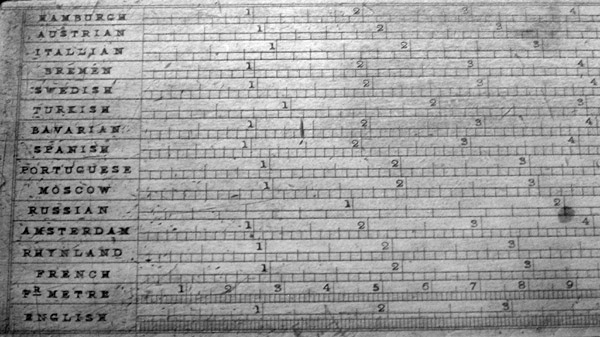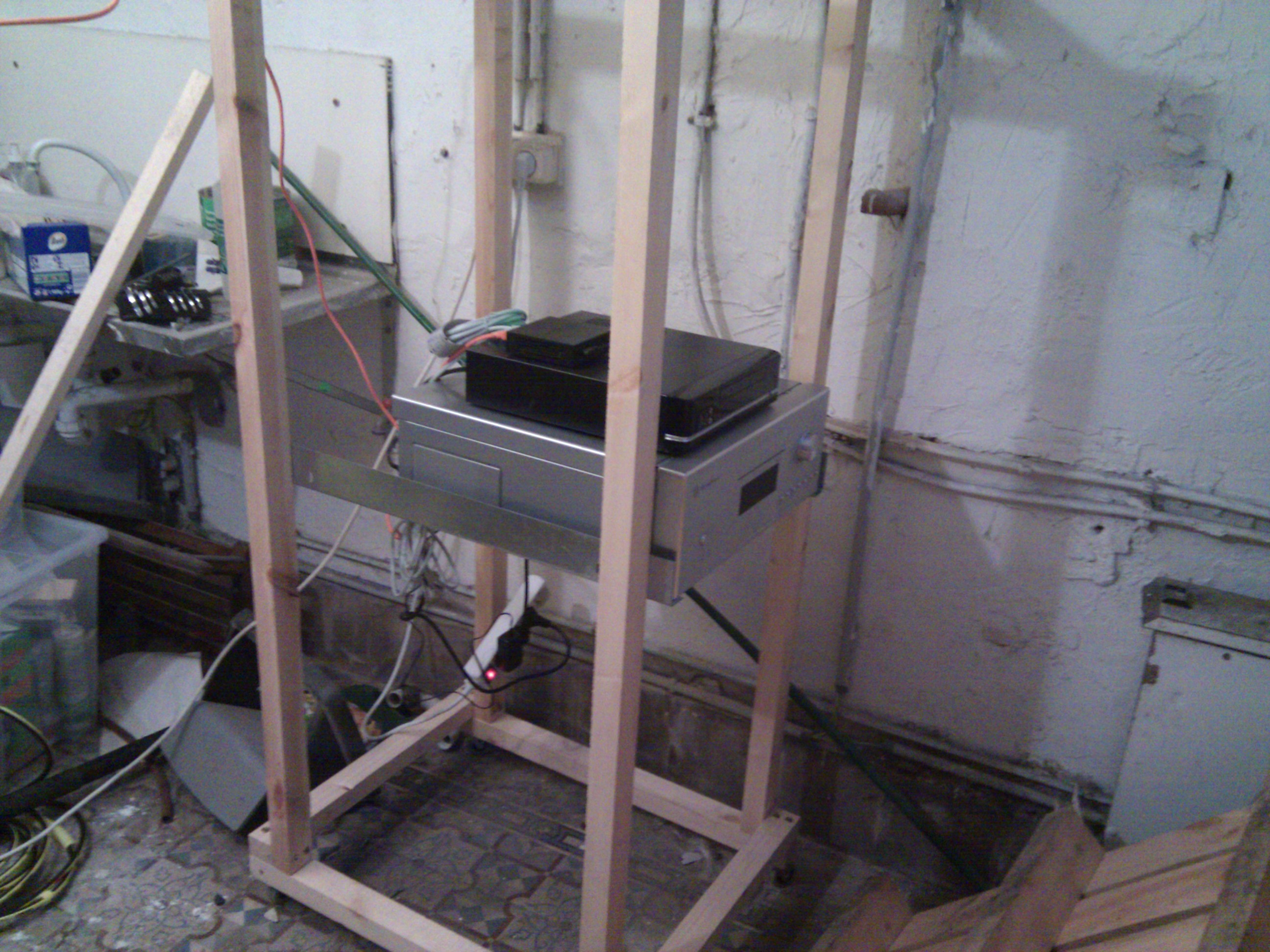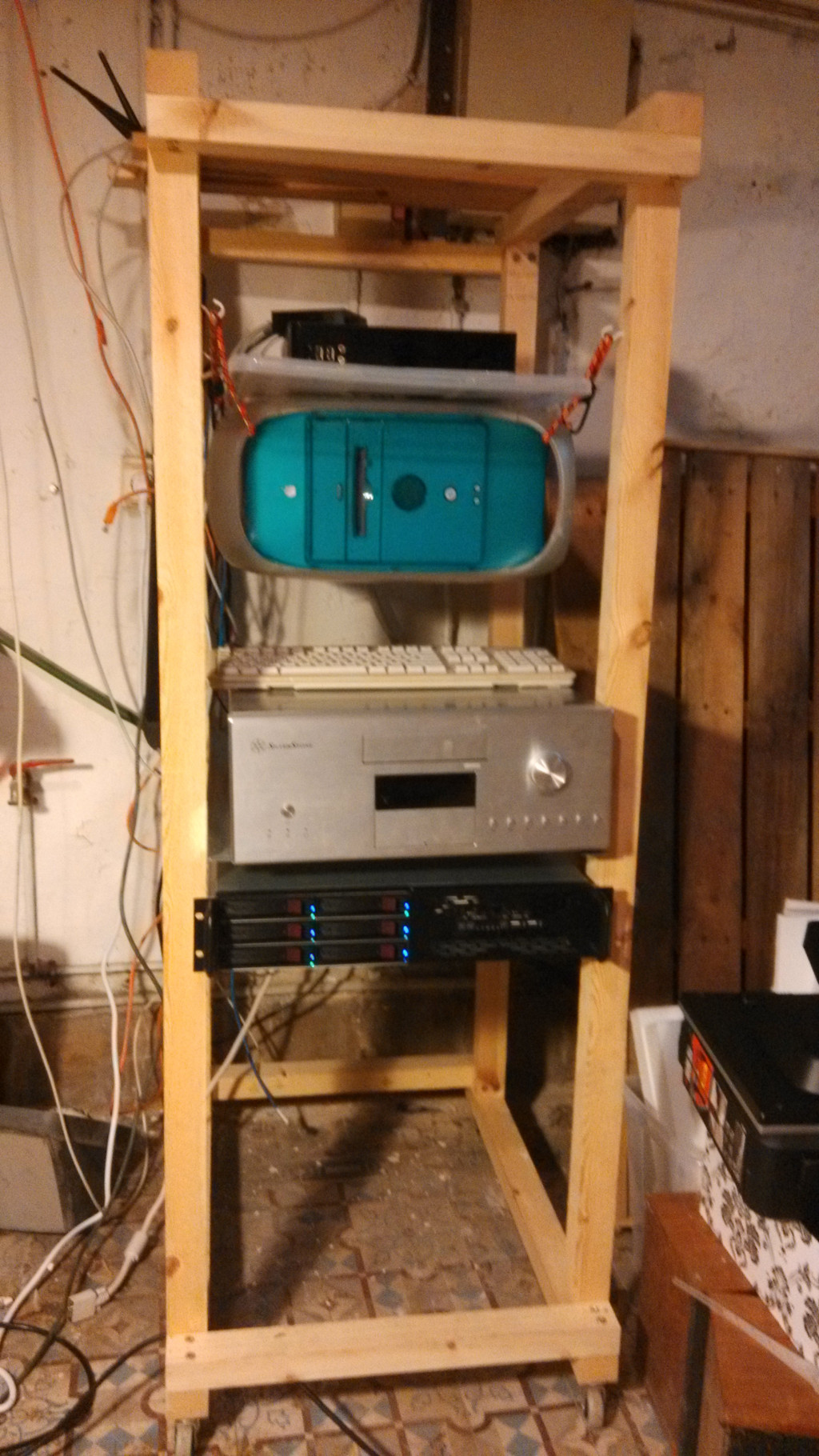The Server Rack
Every nerd needs one!
The computers
Here you can find a history of my pc ownership.At the start of 2013 these were the boxes in the basement:
1: Unraid server in an LC16s.
2: Nas4free in an mini-itx case
3: Macintosh G3 Yosemite, unused
4: bridge, setupless
Getting serious.
I first set up the 2 servers and the bridge on a wobbly half dismantled children's desk. And this worked fine as long as my SO did not descend into the basement.
However, every time I myself went down into the basement I could hear the PSU fans getting louder and louder. The servers did not like the dusty environment. For years already I'd been planning a real server rack. Since my basement is also my workshop, I'd long known that the rack would need an airfilter. I'd designed several instances of rack. Now it was time to execute the designs.
While refreshing my concept of the rack I came across this sterling example of how to build one. I decided to crib my measurements from there.
Measurements
 Well the first measurement to get right is the most important- what exactly is 19"?
Well the first measurement to get right is the most important- what exactly is 19"?It's a inch based measurement system for electronics modules that have a frontplate 482.6mm wide. The modules themselves can be up to 450.85mm wide.
The height of the units is fixed at 43.7mm for 1U modules, 88.1mm for 2u, 132.5 mm for 3U and 177.0 mm for 4U. There's holes in the front plates that are spaced in triplets: 1.5875cm, 1.5875cm, then 1.27cm. Needless to say these holes are better drilled using inch equipment, at 0.625", 0.625" and 0.5" relatively.
Still a bit dubious? Well the height measurements are rounded to 1.75", 3.5", 5.25" and 7" relatively, with 1/32nd of an inch lopped of. And 0.625 of course is 1/16th of an inch.
Now get on your knees and worship the genius that is Isambard Kingdom Brunel who built an empire using such fucked-up modularity, apparently cribbed from some occult interpretation of Egyptian measures- not his idea at all, but politics forced him to work with it.
Pushing the envelope
Now there's a hard limit to the rack's dimensions I need to take into account. My basement is barely 1800mm tall. Not only does this give me a fixed limit, it also means that if I assemble my rack lying down the diagonal cannot be more than 1750mm or I risk jamming against the ceiling, as happened with my storage shelves.
The other limit is the minimum limit. My current large pc might at one point move into the basement, too. At that point I'll need to move it to a 4u case. That means 4u for my Yosemite, 4 u for my LC16s, 4u for the pc, 1U for the Nas4free, 1 U for the bridge, and another 2U in case I add the routers or a KVM.
All in all 16U or 712 mm tall. That being said I can picture emyself adding another 4U PC, another 3U unraid server, and perhaps a last 1U headless pc out of sheer perversity.
So that's 24U or 1068mm. Add casters of 100mm and the frame of the rack at +-100mm, and you get 1200mm. Is that all?
On the contrary, I also need ventilation. Now the ventilation I'll need has to be dustfree. The best way to ensure this, I've figured, is to have fans suck up air trough cylindrical vacuum cleaner filters, then push it trough fabric filters. All of these, of course, need to be reachable. Give it another 200mm for the cylindrical filters, 100mm for the fans and 100mm for the fabric filters. That gives me 1600mm height unless I miscounted. For a diagonal of 1750mm, the depth of the rack has to be 700mm. That's pretty much the standard shallow 600mm rack depth plus 50mm on both front and back for cables and ventilation.
Of course there's no reason why the doors can't add to that depth. Adding a frame to the rear after the rack has been raised, or indeed making all panels (except perhaps the top) detacheable is not that difficult.
The alternative is to review my U needs. Coaxing my current PC from it's P180 into a 3U case should be possible. Likewise a new unraid server could be a 6 disk 2U case, etc.
But no case I'm looking at potentially buying is 60cm deep. And most of the cases and devices are significantly less! So in fact 7000mm will be plenty.
The heart of the matter
My first design ideas had fixed space for the filter installation. However, after consideration, I've decided to instead use sliding panels with the filters and fans mounted on them. This way I can easily adapt and adjust the situation. It does require extra panels on the sides and back to keep the air from leaking.
first cuts
Then finally the big day arrived. A vacation day without SO and kids. I thought up some alternative configurations, and even looked at what leftover wood I could use, but finally decided to follow the example quite closely.
Then I decided to check if the wood store was open- it was after all the day before a banking holiday, and it's not uncommon for these shops to keep odd closing days. Turns out this one had been closed for two years! Luckily there was another one across the street, which duly cut my wood. I used 40x50mm beams, 4 each of 550mm, 700mm and 1400mm.
Back to the batcave, where assembly was trivial. My biggest problem were the batteries on my powerdrill.

I normally have several detailed drawings to work from as well as a step by step plan in my head, but this was too simple a construction.

I did add extra screws across the bottom 4x5 to prevent splitting.

Because I didn't have a sufficiently large right angle, I used the grouts on the tile floor to align the vertical 4x5s.


After testing the angles, I picked a 'bottom' frame. I still had some casters from a previous attempt at a server rack.

And then the frame was ready, just in time to pick up the kids.

Moment supreme
The next morning it was 10 minutes work to mount a pair of brackets I had lying around.
The LC16s has optional mounting brackets but is only 43 cm wide. On these wide 'rails' it slid right in. The rest of the stuff is simply posed in top.

And done!
X-case
Here's a writeup of the following step; I've purchased a rackmounted server case!

the sad end of the nas4free
Originally, I wanted to mount an unraid share on the nas4free box. Instead, I ended up buying a commercial synology NAS.
This offered magnitudes more of useability beyond the nas4free. In short, the nas4free file manager was very old, and mounting remote shares wouldn't work. With the Synology (1 disk) nas I can manage all my unraid servers remotely, allowing me to finally bring some order in my backups.
Onwards
more is coming... when I get round to doing it! On the todo list: Set the Yosemite for wakeonlan and install remote desktop, add it headless to the server rack.
